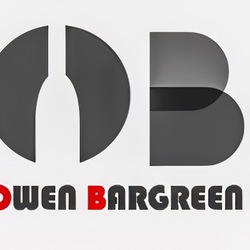Berkshire Winter Harvest
Château Musar
Bekaa Valley Red Blend 2006

Krug
Brut Rosé Champagne Blend
There are certain occasions that call for Krug Rosé. So, HBTM! The bottle was corked in the summer of 2014. It’s a blend of 45 reserve wines with the oldest being from 2007 and the youngest 2002. This is why I think Champagne Makers are some of the most talented people making wine. They are constantly blending up to 100 plus wines to bring that bottle to bottle and year to year branded flavor of consistency. On the nose; red & pink spring flowers, cherries, strawberries, watermelon, black cherry, black raspberries, notes of blood orange citrus, baked bread, soft volcanic mineral and elegant chalkiness. The palate is always ridiculously delicate. Micro bubbles, silky rich texture with beautiful soft acidity. The palate fruits are similar to the nose; rich & ripe cherries, strawberries watermelon, black cherry, black raspberries, notes of blood orange citrus with hints of marmalade. Red & pink spring flowers, baguette crust, soft powdery minerals that give the palate a slight sting and super powdery chalkiness done just right. The finish is beautifully rich, textured, revealing itself in layers and lasts minutes. Photos of; Founder Joseph Krug, House of Krug, Winemaker Eric Lebel, Krug’s Clos du Mesnil, a small plot of 1.85 hectares of Chardonnay...one of the world’s greatest vineyards and their salon tasting room. Producer history & notes...Krug was founded by Joseph Krug in 1853. They are based in Reims, the main city in France’s Champagne region. It is one of the famous Champagne houses that formed part of the Grande Marques. Today the house is majority owned by the multinational conglomerate LVMH, which owns Moët Hennessy, Louis Vuitton S.A. and who’s wine producer portfolio includes other well known wine brands such as; Moët & Chandon, Veuve Clicquot, Château d'Yquem, Ruinart & Cheval Blanc, Dom Perignon and many others. Despite LVMH's majority ownership, the family is still actively involved in all the key decisions of the house but does not manage the day-to-day operations. Joseph Krug was born Johann-Joseph Krug, a butcher’s son, in Mainz, on the Rhine in 1800 when the city was part of the Napoleonic Empire. Having dispensed with the name Johann, he left Mainz in 1824 and in 1834 moved on to Paris. Germans were in demand in France as accountants and bookkeepers. So, Joseph joined Champagne Jacquesson in Châlons-sur-Marne. He spent eight years with Jacquesson. His work took him beyond accountancy. He went around Europe testing the market and assessing criticism from wine sellers and customers. He learned about composition and taste so that by 1840 he already seemed to have been blending Champagne for at least one other house. In 1841, he married Emma-Anne Jaunay. The daughter of a French hotelier based in London’s Leicester Square. The following year their son Paul Krug was born. In 1842 he moved to Reims and following a year later, Krug et Cie was founded with his partner, Hyppolite de Vivès. Joseph was fluent in French, English and German and even spoke some Russian, putting the company in position to exploit key overseas markets. Joseph died in 1866 and was succeeded by his son Paul Krug, who had been trained by his father to takeover. Joseph under the supervision of Paul, Krug was established as a Grande Marque. By the 1880s the prestige of Krug was acknowledged in the United Kingdom and became the primary overseas market for Champagne. In 1866, the House moved into Rue Coquebert, in Reims as it remains. After Paul’s death in 1910, he was succeeded by his son, Joseph Krug II. However, during World War I Joseph II was taken prisoner and his wife Jeanne played a key role in the House at a time when the Western Front divided the region between the Allies and the Germans. After the war, Joseph II’s slow recovery led to his nephew Jean Seydoux becoming joint manager in 1924. In that decade, the Krug 1926 and 1928 vintages were created, which have been considered by critics to be amongst the greatest Champagnes. Lawyer and wine writer Maurice Healey declared “Krug” the king of all Champagnes. Further, “that the 1928 Krug was the best wine made in the present century.” By the mid-1930s, Paul Krug II, the son of Joseph II, was active in the business and would become head of the House from 1959 to 1977. His father died in 1967, by which time he was, according to Patrick Forbes, “one of the most popular and respected figures in the Champagne district.” In 1962 Henri Krug, the son of Paul II, joined the management, as did his brother Remi three years later. Their arrival was followed by a series of innovations, including extensions in the range of Champagnes. In 1979, for the first time, a graduate winemaker joined the House. In January 1999, the House became part of LVMH and by 2007, the brothers, while remaining on the tasting committee, had stepped down from day-to-day responsibilities. In 2009 Olivier Krug, the son of Henri, became House Director. At harvest, Krug grapes are pressed close to their plots with the first juice kept for 24 hours in a vat prepared for the fermentation stage. The pressing from each plot is vinified separately. A pressing contains 4,000 kilos of grapes and yields 20.5 hectolitres of first juice (cuvée), which is poured into twelve oak casks chosen at random. Once fermentation is complete, the eleventh and twelfth casks are used to top up the other ten casks in order to protect the new wines from oxidation. For fifteen days, each cask is topped up with wine from the same plot. Krug uses small 205 liter oak casks tailor-made from trees that are more than two centuries old in the forests of Hautes Futaies in Central France. The average age of Krug oak casks is 20 years. They are retired after approximately 40 years of use. The wines remain in the casks for several weeks. During this period, clarification occurs naturally from the cool temperature of the cellar given the coming winter, as does a micro-oxygenation process from the use of natural containers, making the wine more resistant to oxygen over time. Finally, between December and January, the wine is drawn off into small stainless-steel vats. From here, depending on the decisions of Krug’s tasting committee, the wines will either contribute to that year’s assemblage or be stored in steel vats in the House’s library of 150 reserve wines to be used in the blend of a future Krug Grande Cuvée and or Krug Rosé. — 8 years ago


Azienda Agricola Musella
Monte del Drago Red Blend 2015
First year of production: 1997
Vineyard: Corvina 50% and Cabernet Sauvignon 50%
Geographical Location: Veneto – Italy Northeast of Verona, in the hill that divides Montorio from the Valle d’Illasi
Extension: 27 hectares of new shoulder pad
Plant date: 1960 to 1999.
Composition of the soil: Limestone with prevalence of iron red clay in the vineyards The Perlar and Palazzina, medium tufa clay dough in the Mount of the Dragon
Strains per hectare: 5/7000 to shoulder.
Harvest: From late August to mid-September.
Yield per plant: 1 kg.
Climate trend: Cold and dry winter. High temperatures arrive in March
moving the shoots well in advance, the flowering already begins
mid-May. Heavy rains at the beginning of summer, which
keep productivity low. Hot and dry summer, almost
without precipitation. Early harvest start at the end of August and
excellent harvest until the end of September. Great vintage.
Winemaking technique: Cabernet Sauvignon harvesting is about a week ahead
Corvina. Both grapes are placed in withering
, but the Cabernet is already being pinched after two weeks,
corvina is left for up to three weeks in the boxes.
Separate vinification and rest for 18 months in new tonneau for the
Cabernet and one or two years old for the Corvina. After
assembly waits a few months before bottling. — 6 years ago
Giuseppe Campagnola
Amarone Classico Corvina Blend 2011
Wonderful bold juice grape from the winter harvest makes a great wine from taste to after — 10 years ago
Penfolds
Bin 2 South Australia Shiraz Mourvedre 2012
OVERVIEW
GRAPE VARIETY VINEYARD REGION WINE ANALYSIS MATURATION VINTAGE
CONDITIONS
COLOUR NOSE
PALATE
PEAK DRINKING LAST TASTED
Bin 2 was first released in 1960, yet was discontinued in Australia in the 1970s at the height of the white wine boom. The original Bin 2 was an ‘Australian Burgundy’ style (despite its Rhône varieties) – typically a soft, medium-bodied wine based on Shiraz. The Bin 2 blend of Shiraz and Mourvèdre is still relatively uncommon in Australian table wines. Also known as Mataro or Monastrell, Mourvèdre was introduced to Australia in the 1830s. Sometimes used in fortified wine production, this grape is widely planted in the Barossa Valley. It is greatly valued by winemakers for its blending attributes, adding complexity and palate grip. Interest in Bin 2 has grown as the popularity of traditional Rhône varieties and blends continues to flourish.
89% Shiraz 11% Mourvèdre
Barossa Valley, McLaren Vale and Padthaway Alc/Vol: 14.5%, Acidity: 6.2 g/L, pH: 3.64
10 months in seasoned French and American oak
Winter rainfall was lower than the long-term average for most parts of South Australia. Variable conditions continued through the period from October to December, merging to a mild summer, with a few short periods of heat. The mild daytime temperatures and cool evenings across most of the ripening period, allowed for impressive flavour development, without inflated baumés. Balanced canopies matched fruit load, providing even yet not too speedy ripening. Warm dry conditions continued throughout harvest with fruit picked in optimal condition. Smaller berry and bunch sizes were noticeable in most regions and this, coupled with favourable weather conditions, saw great results for some quality markers – colour, tannin profile, fruit concentration and flavour depth.
Deep plum red
Inviting. Lifted aromatics hovering above – sweet yeast bun, fresh liquorice. Red curranted fruits, sour cherry, fresh quince...
A ‘trifled’ vinous chromatogram – jelly/custard/coconut!
Expansive (for a Bin 2!).
Only a fleeting suggestion of background oak. Tea-leaf/talc tannins... fathered by Shiraz or Mourvèdre?!
Savoury and charcuterie flavours charmingly mesh with those reminiscent of Jamaican raisined dark chocolate.
Now – 2020 November 2013
Food Pairing
Beef Lamb Spicy food Mature and hard cheese
Grapes
Shiraz/Syrah · Mourvedre
Price
$30
— 10 years ago
Moussé Fils
'Special Club' Les Fortes de Terres Brut 2015
🏅Rating 92+/100 (4,25⭐)
Cédric Moussé is the fourth generation of his family to make champagne at Moussé Fils. He is young, energetic and innovative.
In 2012, Mousse completed construction of a new winery in Cuisles, designed to be as environmentally sustainable as possible. It is state of the tech art.
In 2005, Moussé joined the Club Trésors de Champagne, and began making a Spécial Club champagne in that vintage. It's the first 100-percent meunier champagne in the history of the Club.
Single vineyard Meunier comes from 4 plots in lieu-dit “Les Fortes Terres”.
Pale pink gold colour. Crushed almonds, raspberry and strawberry with splash of milk (full malo). Reductive winemaking puts emphasis on the purity of the fruit! 1g/l dosage is enough to balance. Broad-shouldered on the palate. Dry long finish. Spent over 3 years sur lee and disg. 10/2019
Solar 2015 vintage speaks from the glass. Overall that was a warm year which started with a mild and humid winter, followed by quite a dry spring and summer. Harvest started on the 9th of September.
This is one of Champagne's finest examples of pure meunier!
---
Instagram: @wine_talks_club — 5 years ago
Krug
Grande Cuveé 166ÈME Édition Brut Champagne Blend
A total stunner, the ‘166EME’ by Krug is a blend of 140 wines ranging from vintages 1996-2010. The wine spent seven years in the cellar before disgorgement in Winter 2016-17. Blending for the wine was crafted near harvest in 2010 with the final edition being 45% Pinot Noir, 39% Chardonnay and 16% Pinot Meunier. The wine shows dizzying light bubbles in the glass, showcasing lemon oil infused sourdough bread with nutty and earthy undertones that entice on the nose. The palate is sensationally refreshing, showing tremendous verve and elegance that the ‘Grand Cuvee’ is truly known for. Shades of marzipan dance with the copious citrus zest, and macadamia nut baked bread flavors. There are undertones of peat moss that line the high tones. Complex and delicious to the last drop, this magnificent wine is showing remarkably now but will continue to build for the next two decades or more. Drink 2019-2040- 97 — 6 years ago


LíráH
Winter Harvest Granite Belt Nebbiolo 2006
A bit rare; 100 dozen made; about to go on sale; #granitebelt #nebbiolo made by one of Australia's leading specialty vinegar makers; actually the rest becomes nebbiolo verjuice! Lirah #lirah ; now a barley sugar, mature neb with ribbed tannins #drinklocal #drinkqld #aussieaussie #granitebeltwinecountry #2006 @lirah @australianvinegar — 10 years ago
Lioco
Butch Cameron Vineyard Sparkling Chardonnay
Celebrating Mortensaften, or St. Martin's Day, the end of a bountiful harvest and a hint of winter in the air. Perfect to start with a bit of sparkling-sweet but lemon tart — 11 years ago







Jay Kline

It is customary for the wines of Chateau Musar to be released seven years post-vintage. However, in 2013, the decision was made to hold the vintage back. 2006 was unusual for two reasons. The first, were the cool climatic conditions in the Bekaa; the likes of which had not been seen since the 1950’s. There was a two-week period in winter where the valley was blanketed in snow and mild temperatures remained in effect throughout much of the growing season. The second was much more tragic: 2006 was a war year in Lebanon. On July 12th of that year, Israel and Hezbollah engaged in a bloody conflict that lasted (officially) a little over a month. Sadly, thousands of lives were lost. In 2017, eleven years after harvest, the 2006 vintage was deemed ready for release.
Poured into a decanter about 90min prior to service. The 2006 pours a deep garnet color with a near opaque core; medium+ viscosity with moderate staining of the tears. On the nose, the wine is developing with notes of black cherry, blackberries, black currants, tobacco, horse blanket, leather, some red and purple flowers, dried herbs and Eastern spices. On the palate, the wine is dry with medium+ tannin and medium+ acid. Confirming the notes from the nose. The finish is long and absolutely delicious. A triumph and perfect with lamb chops. Drink now through 2046+.
How Chateau Musar endures to make wines from the Bekaa remain one of the great examples of human grit and determination available in the world of wine. Frankly, it’s a minor miracle this vintage ever made it to the winery. — 5 months ago